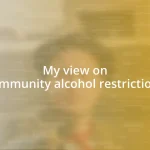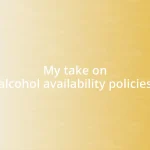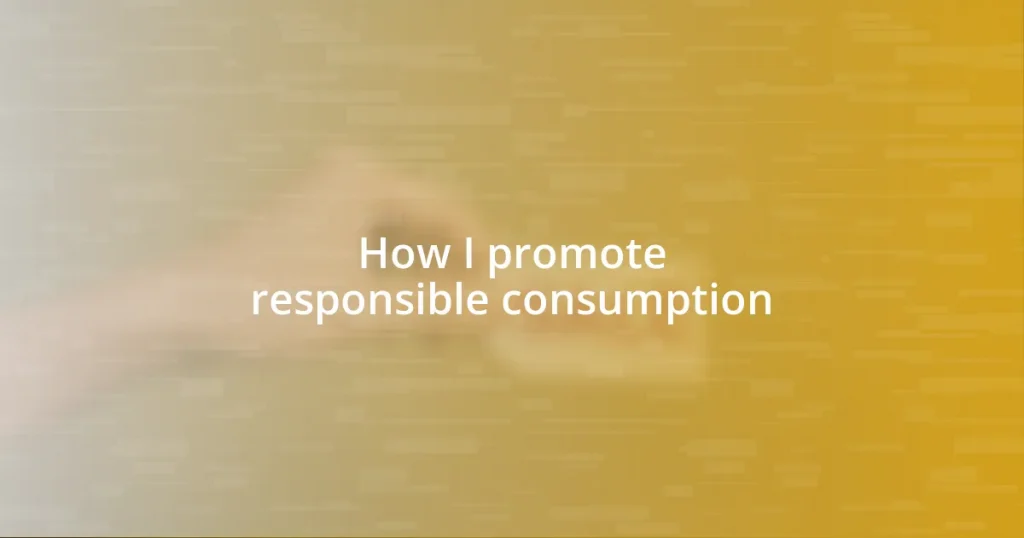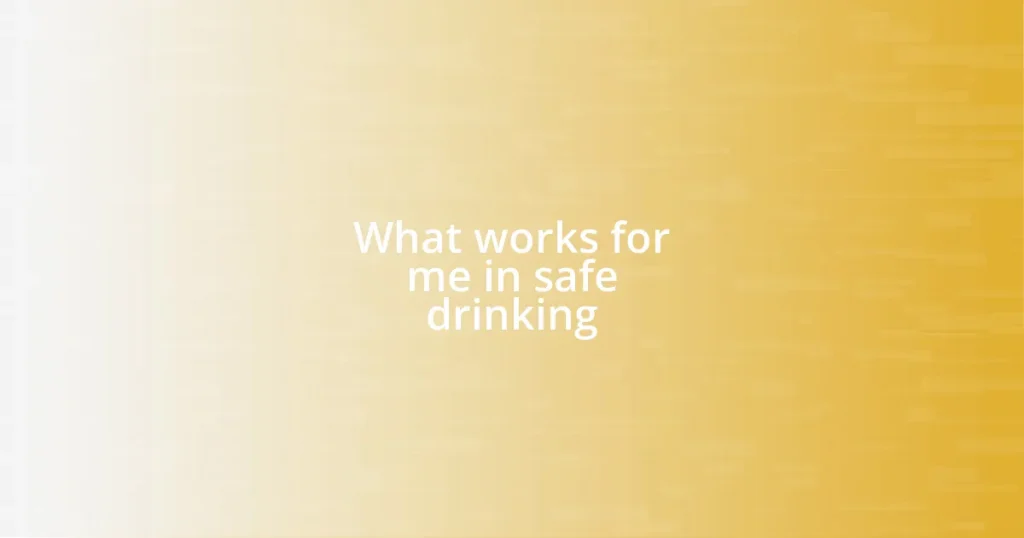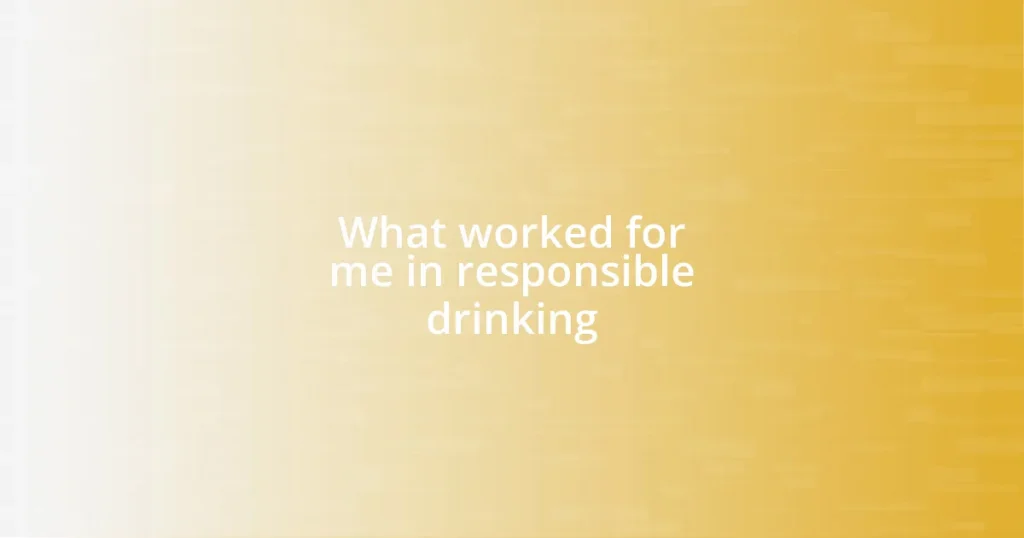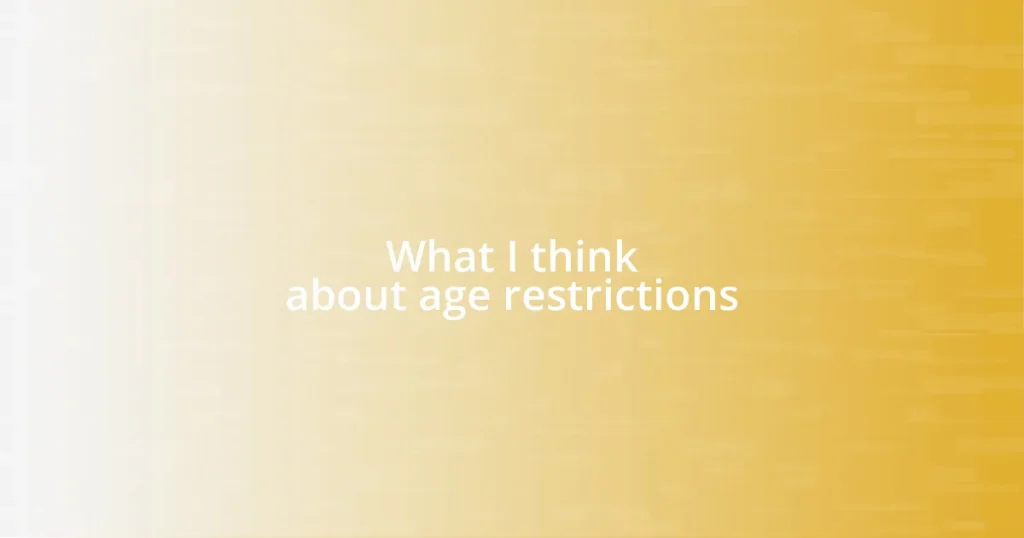Key takeaways:
- Responsible consumption involves making mindful choices that benefit personal and environmental health, fostering a sense of empowerment and community awareness.
- Identifying sustainable products is crucial; look for certifications, brand transparency, and engage with local businesses to support sustainable practices.
- Reducing waste can be achieved through practical steps like using reusable items, mindful purchasing, DIY solutions, bulk buying, and donating instead of tossing items.
- Advocating for policy changes and measuring personal consumption impact through tracking waste and using carbon footprint calculators can amplify efforts towards sustainability.
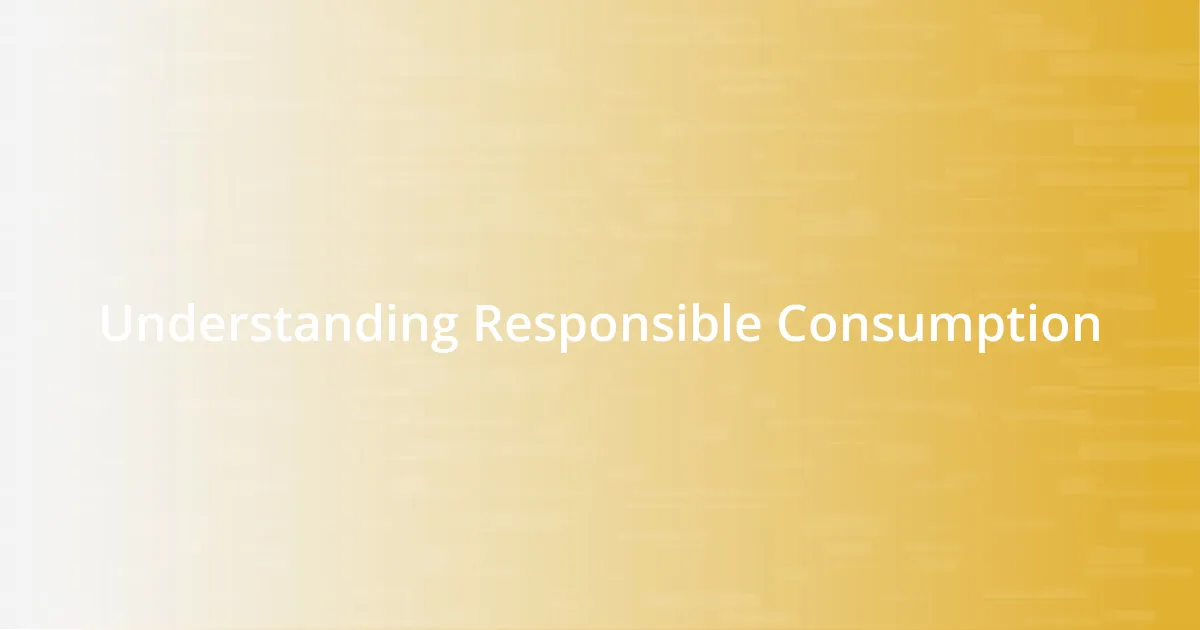
Understanding Responsible Consumption
Responsible consumption is about making mindful choices that benefit both ourselves and our planet. I remember a time when I decided to forgo fast fashion and instead invest in a few high-quality, sustainable pieces. The feeling of satisfaction from supporting ethical brands and knowing my purchases won’t contribute to waste was transformative—don’t you feel a sense of pride when you know your choices matter?
When I think about responsible consumption, it often leads me to reflect on our emotional ties to the products we buy. Have you ever felt overwhelmed by the pressure to keep up with trends? Personally, I’ve found that cultivating a simpler, more intentional lifestyle not only saves my wallet but also lightens my mental load. Taking a step back helps us realize that less truly can be more.
Moreover, responsible consumption isn’t just about buying; it’s also about understanding how our choices ripple into broader social and environmental contexts. For instance, I once participated in a community event focused on reducing plastic use. The discussions opened my eyes to how one small change—like carrying a reusable bag—could inspire others to reflect on their habits. What would happen if we all made these little adjustments?
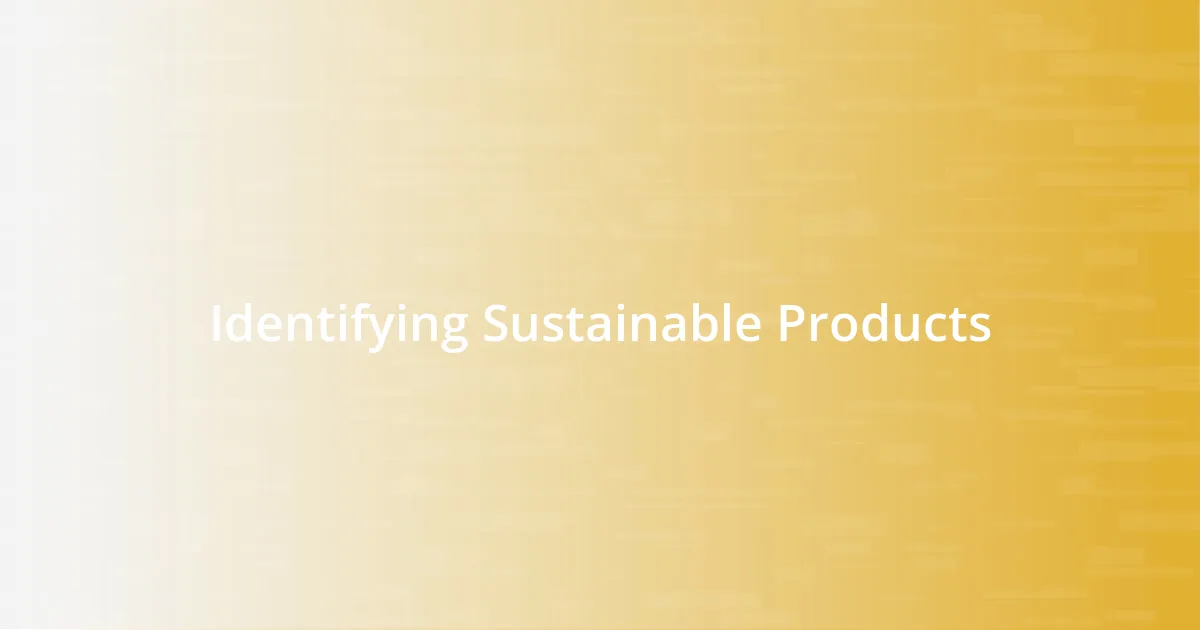
Identifying Sustainable Products
Identifying sustainable products is crucial in making responsible consumption choices. I’ve noticed that when I shop, looking for certifications like Fair Trade or USDA Organic can really make a difference. These labels often indicate that the products were made with environmentally friendly practices and ethical labor conditions. Have you ever walked down a grocery aisle and felt uncertain about what to choose? I remember when I first started looking for these labels; it felt empowering to know I was selecting items that aligned with my values.
Another effective way to identify sustainable products is by researching the brand’s practices. For instance, I try to read up on companies’ sustainability reports or mission statements. I once stumbled upon a brand that not only uses recycled materials but also invests in community projects. This kind of transparency gives me confidence in my purchase decisions, reassuring me that my money is going toward positive efforts. How do you feel when you find a brand that stands by its promises?
Lastly, engaging with local businesses can also lead to discovering sustainable options. I vividly recall visiting a local farmer’s market and chatting with growers about their sustainable farming methods. It was refreshing to see how connected they were to their products and the community. In my experience, these personal interactions often make me more inclined to support businesses that truly care about their impact.
| Criteria | Examples |
|---|---|
| Certification Labels | Fair Trade, USDA Organic |
| Brand Transparency | Sustainability reports, mission statements |
| Local Engagement | Farmers markets, community projects |
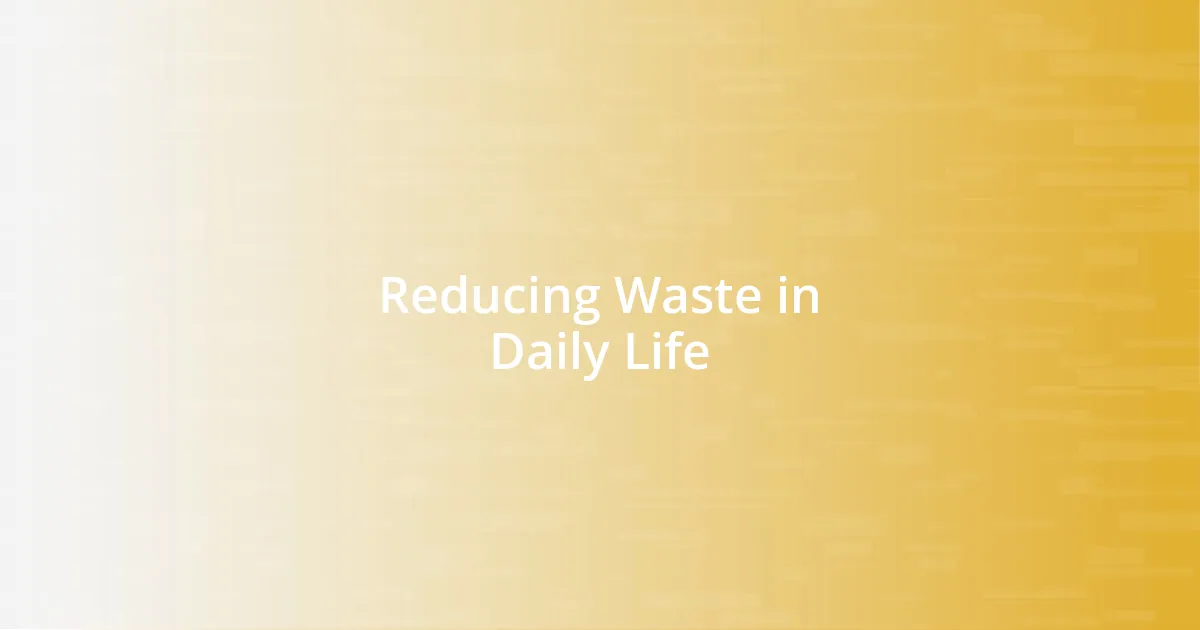
Reducing Waste in Daily Life
Sometimes, I find that reducing waste in daily life can feel daunting, but it’s incredibly rewarding once you make those small adjustments. I recall a time I decided to implement a zero-waste challenge for a month. At first, the thought of minimizing even my food waste seemed overwhelming, but as I kept track, I discovered it was much easier than expected. By simply composting scraps and planning my meals better, I noticed a significant reduction in what I threw away. It was eye-opening to realize how much waste I generated without even thinking about it—can you relate to that feeling?
Here are some practical steps to help reduce waste in daily life:
- Reusable items: Switch to reusable bags, water bottles, and coffee cups to cut down on single-use plastics.
- Mindful purchasing: Before buying, ask yourself if you truly need the item and if it aligns with your waste-reduction goals.
- DIY solutions: Consider making your cleaning products or beauty items at home. I found a simple recipe for an all-purpose cleaner that not only works well but also eliminates the need for extra bottles.
- Bulk buying: Purchase items in bulk to limit packaging waste, and don’t hesitate to bring your own containers to stores.
- Donate and recycle: When decluttering, I make it a habit to donate items in good condition instead of tossing them.
Making these changes has not only decreased my waste, but it has also fostered a deeper awareness of my consumption habits. Each small choice adds up, and I truly feel empowered when I actively participate in reducing my environmental footprint.
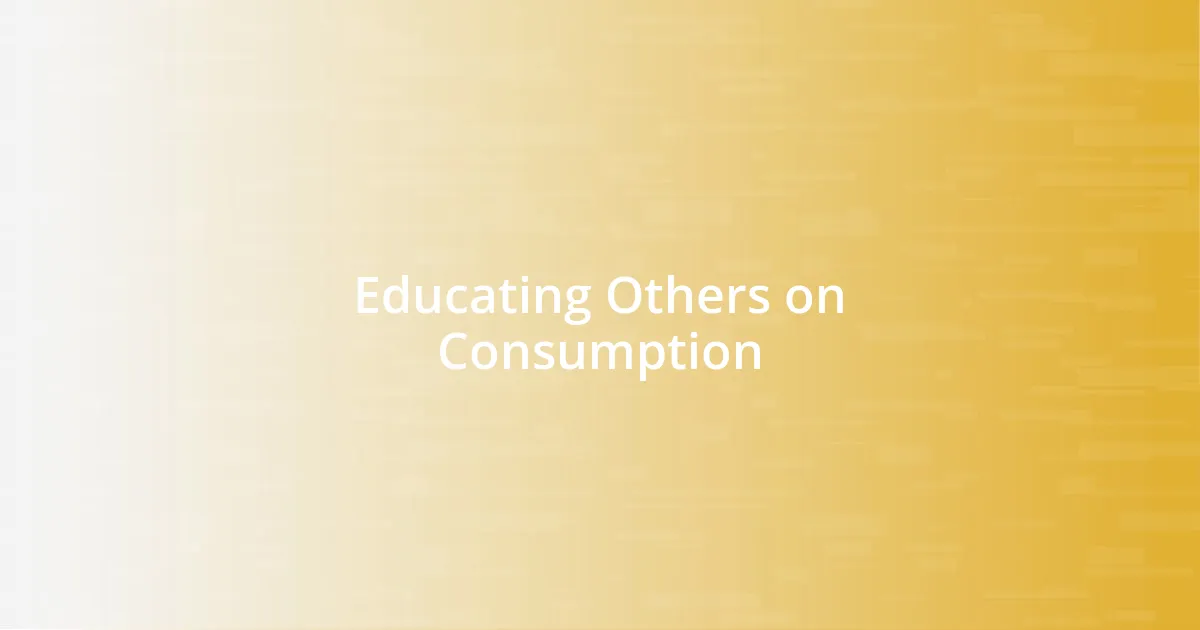
Educating Others on Consumption
Educating others about responsible consumption is something I genuinely enjoy. One time, I hosted a small gathering with friends, where I shared some insights on the impact of fast fashion. As I revealed the shocking statistics—like how a single cotton t-shirt can take over 2,700 liters of water to produce—I saw the realization wash over their faces. It reminded me how powerful knowledge can be in sparking change.
When I think about how I can inspire responsible consumption in others, I often turn to social media. I remember posting a photo of my thrifted outfit alongside a quick caption about the benefits of secondhand shopping. The response was incredible! Friends started tagging me in their thrift finds and sharing their own excitement. It was this collective energy that transformed a simple act into a movement, don’t you think that education can have such a ripple effect?
In my experience, engaging in community workshops can be particularly effective for spreading awareness. I once joined a local initiative where we taught families how to create their own cleaning products using natural ingredients. Watching the kids get excited about mixing vinegar and baking soda was unforgettable. It’s moments like these that solidify my belief that hands-on activities enable people to grasp the essence of sustainable choices—they don’t just learn; they experience it. Have you ever attended a workshop that opened your eyes to new possibilities?
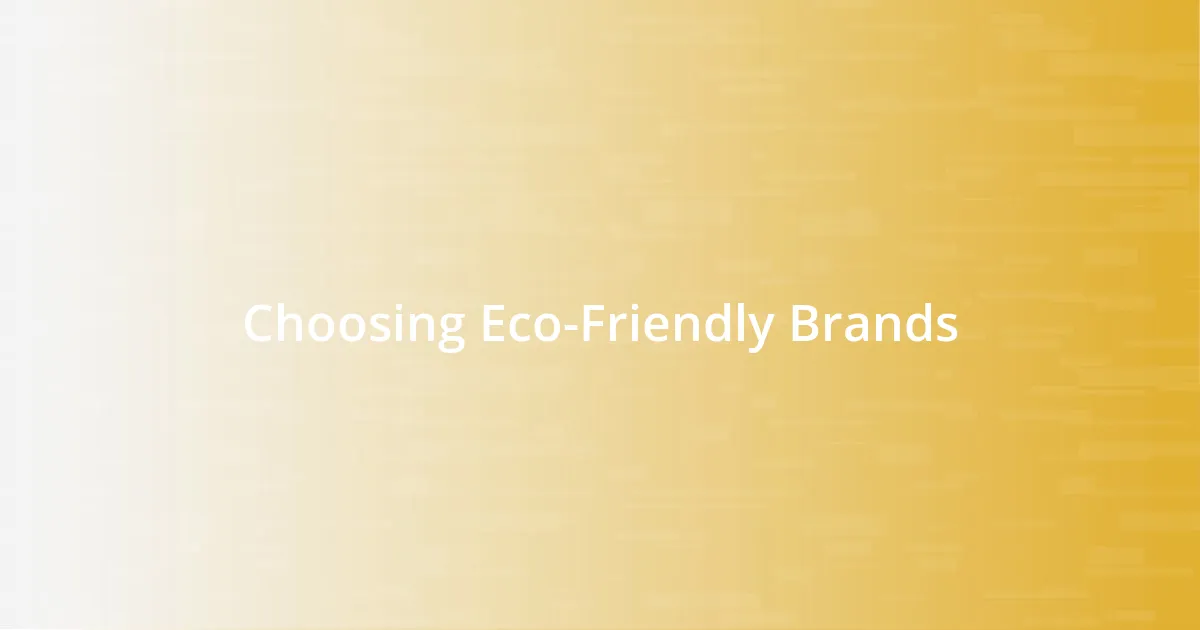
Choosing Eco-Friendly Brands
Choosing eco-friendly brands can be incredibly rewarding, but it often requires a conscious effort. I remember the first time I switched to a sustainable skincare brand instead of my usual product. I felt a rush of excitement when I realized not only was I making a healthier choice for my skin, but I was also supporting a company committed to ethical sourcing and eco-friendly packaging. It’s amazing how a simple change can align personal care with values that matter to me.
When evaluating brands, I look for certifications that confirm their sustainability claims, like Fair Trade or USDA Organic. One time, I stumbled upon a local coffee roaster that met these criteria. Their commitment to ethical sourcing was clear, and watching them engage with fair growers made me feel proud to support their mission. Have you ever considered how much influence your choices can have on communities and the environment?
Additionally, I’ve learned to be wary of greenwashing—where brands present themselves as eco-friendly without backing it up. Once, I bought a product that proudly claimed to be “green,” only to discover later it contained harmful chemicals. This experience taught me the importance of doing my research before jumping on the eco-train. I now take time to read reviews and seek transparency from brands, ensuring my purchases reflect my commitment to sustainability.
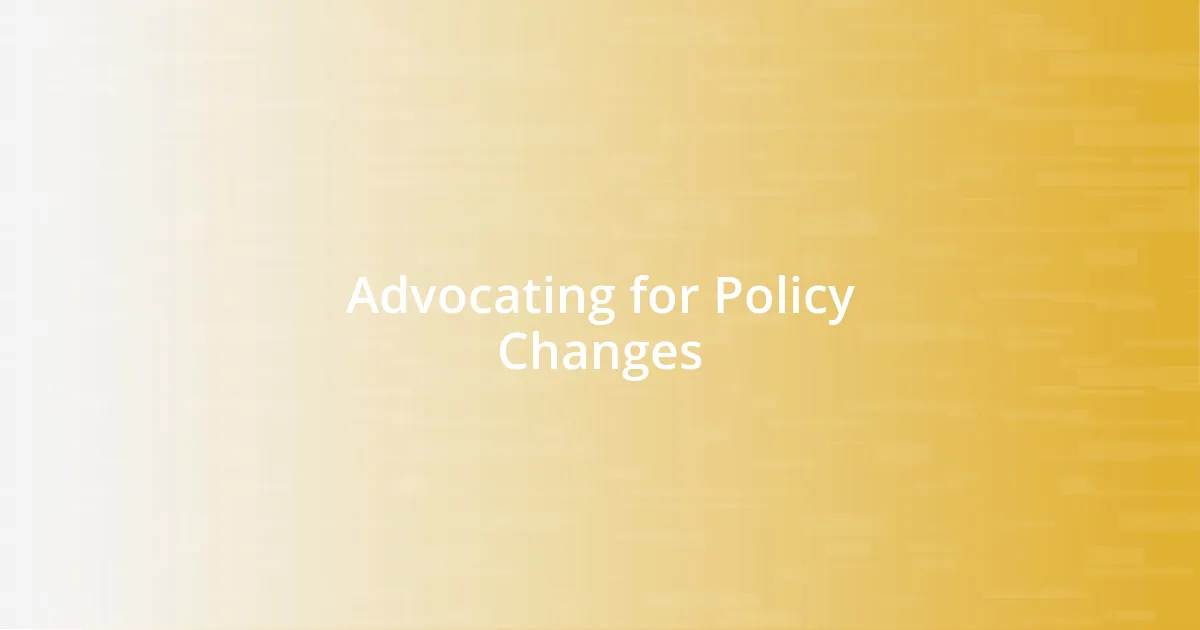
Advocating for Policy Changes
Advocating for policy changes is essential for fostering responsible consumption on a broader scale. I recall attending a community meeting where a local official spoke about upcoming legislation to regulate plastic usage. I felt a surge of hope as I listened to passionate citizens sharing their stories and the tangible steps they wanted to see taken. It’s incredible how a few committed voices can drive momentum toward significant change, don’t you think?
During one campaign initiative, I took part in a letter-writing effort aimed at pushing for stricter regulations on waste management. Each letter I penned felt like a small but meaningful contribution to a larger cause. The thrill came when I realized how these collective efforts led to an actual town hall discussion, highlighting the importance of citizen engagement in policymaking. Have you ever participated in something that made you feel like your voice truly mattered?
In my experience, aligning with grassroots organizations amplifies our ability to advocate for impactful policy. I remember volunteering with a group that fought for sustainable agriculture initiatives. The passion of the members ignited my own commitment—seeing firsthand how their advocacy led to policy changes that supported local farmers was inspiring. It made me appreciate the power of collaboration in driving responsible consumption trends forward.
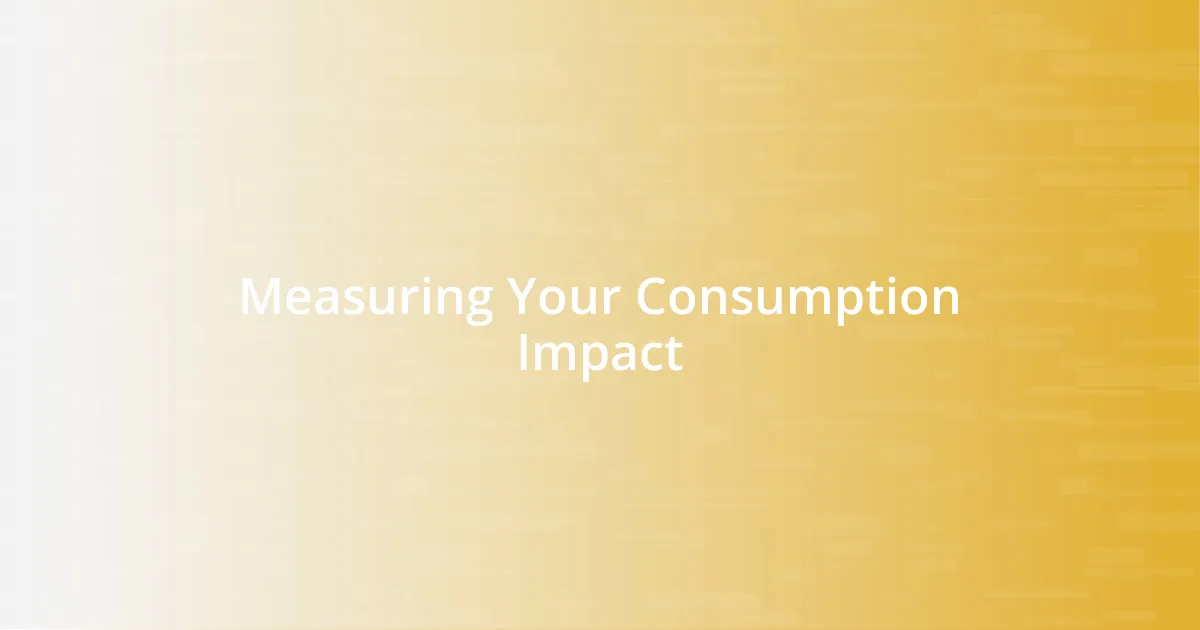
Measuring Your Consumption Impact
One of the most effective ways I measure my consumption impact is by tracking my personal waste. I once kept a detailed diary of everything I discarded over a month—surprisingly, the results were eye-opening. Seeing the sheer volume of plastic and food waste made me realize how my choices echoed far beyond my home. Have you ever taken a close look at what you throw away? You might be surprised by what you find.
Another useful tool I’ve embraced is carbon footprint calculators. I vividly remember my first attempt at using one; I was shocked to learn how my lifestyle choices added up. Simply by entering my travel habits, energy use, and dietary preferences, I grasped my environmental impact in a way I hadn’t before. This deeper awareness pushed me to adjust my habits—like opting for more plant-based meals and reducing single-use items. Have you tried one? It’s a revealing experience that can prompt better decisions.
Lastly, engaging with online communities dedicated to sustainability has been invaluable. Recently, I joined a local group focused on sharing tips for reducing consumption. The collective wisdom shared there inspired me to start a monthly challenge—like zero-waste dinners or thrift shopping. It’s amazing how discussing our consumption habits can lead to action and accountability. How often do you engage with others about your consumption choices? That interaction can foster a deeper understanding of our collective impact.






